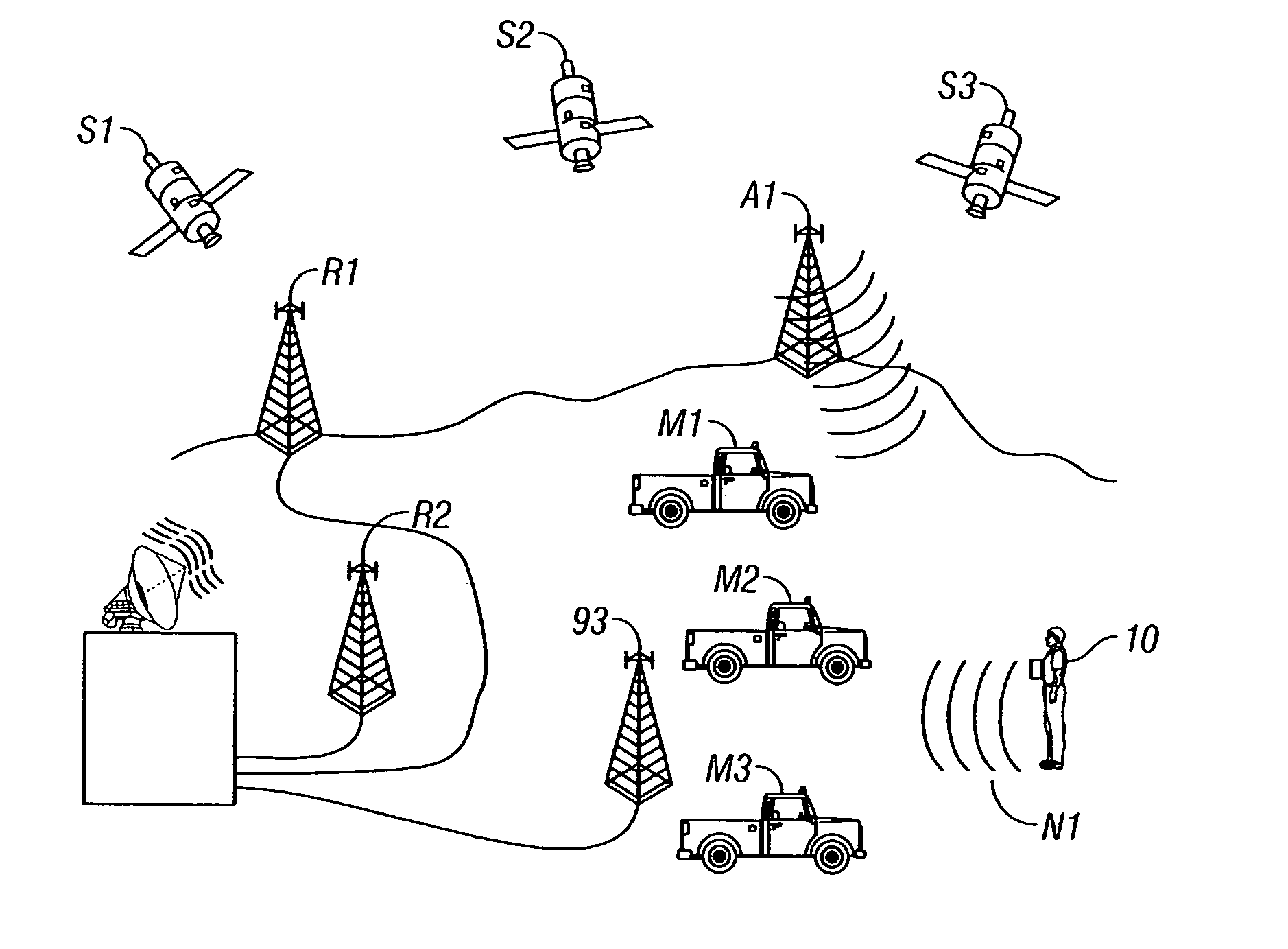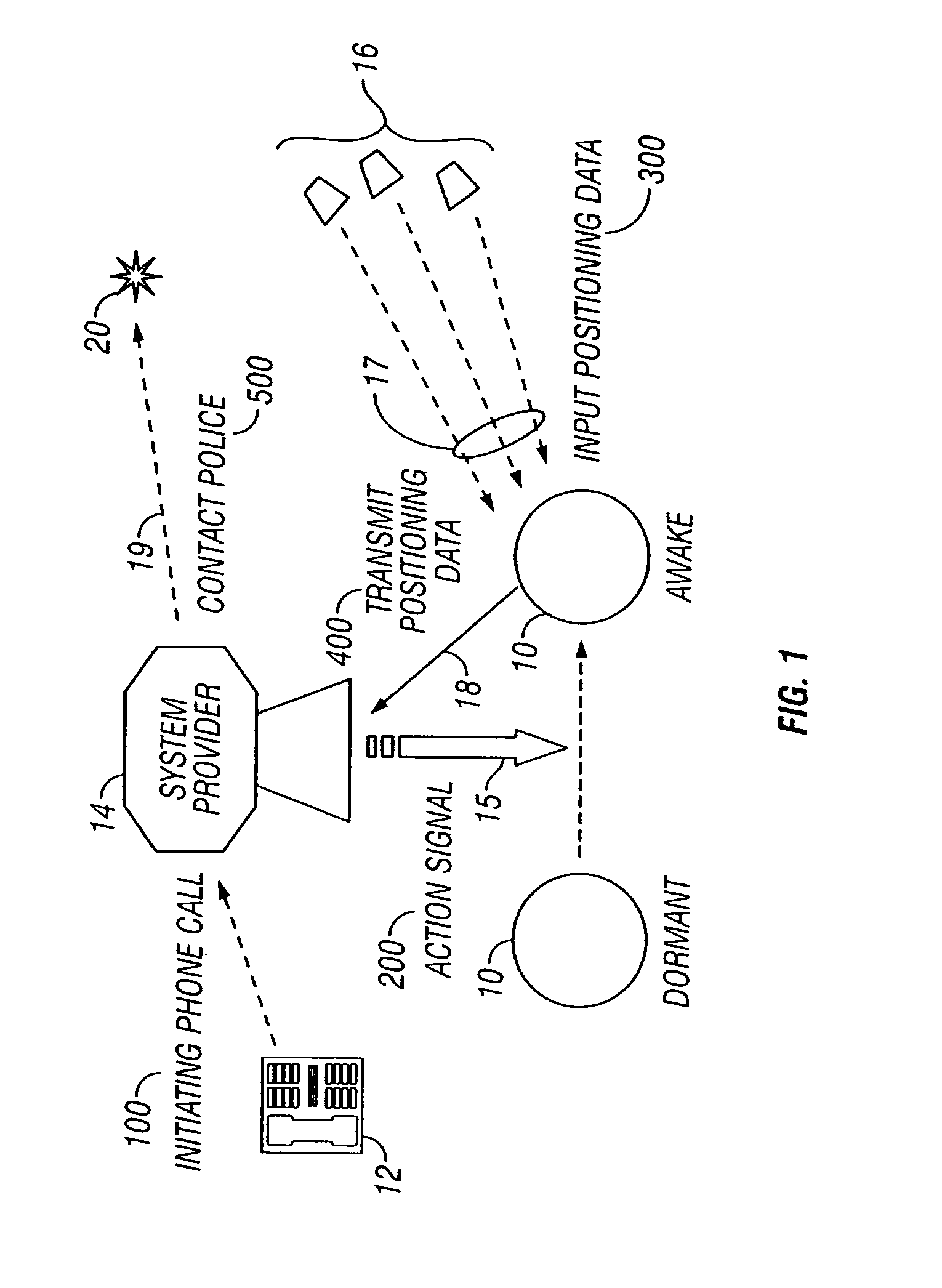Method and apparatus for locating and tracking persons
a technology for applied in the field of locating and tracking people, can solve the problems of cosmetically unappealing placement of the device immediately beneath the skin, significant medical risk, and discomfort of individuals,
- Summary
- Abstract
- Description
- Claims
- Application Information
AI Technical Summary
Benefits of technology
Problems solved by technology
Method used
Image
Examples
example # 1
Example #1
[0124]1. P / G contacts PSP[0125]2. PSP activates R[0126]3. R provides location to 911[0127]4. 911 provides emergency recovery[0128]5. 911 contacts P / G
example # 2
Example #2
[0129]1. P / G contacts PSP[0130]2. PSP activates R[0131]3. R provides location to 911[0132]4. 911 provides emergency recovery[0133]5. 911 contacts PSP[0134]6. PSP contacts P / G
example # 3
Example #3
[0135]1. P / G contacts PSP[0136]2. PSP contacts 911[0137]3. 911 activates R[0138]4. R provides location to 911[0139]5. 911 provides emergency recovery[0140]6. 911 contacts P / G
PUM
 Login to View More
Login to View More Abstract
Description
Claims
Application Information
 Login to View More
Login to View More - R&D
- Intellectual Property
- Life Sciences
- Materials
- Tech Scout
- Unparalleled Data Quality
- Higher Quality Content
- 60% Fewer Hallucinations
Browse by: Latest US Patents, China's latest patents, Technical Efficacy Thesaurus, Application Domain, Technology Topic, Popular Technical Reports.
© 2025 PatSnap. All rights reserved.Legal|Privacy policy|Modern Slavery Act Transparency Statement|Sitemap|About US| Contact US: help@patsnap.com



